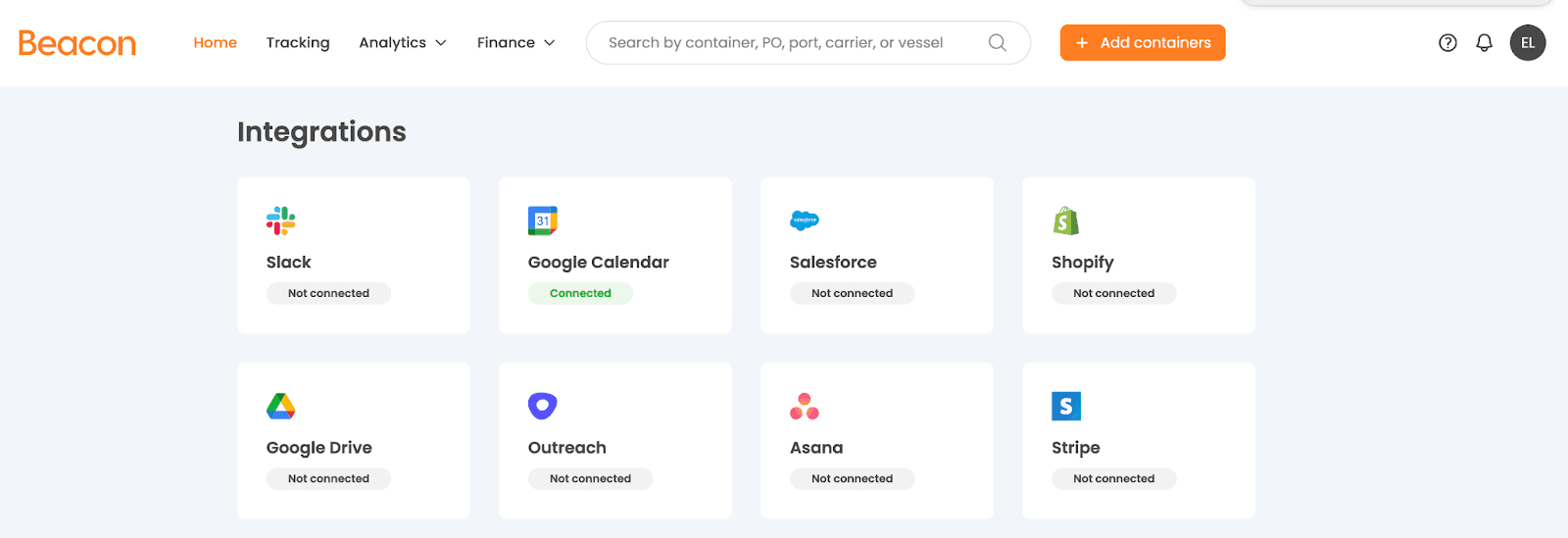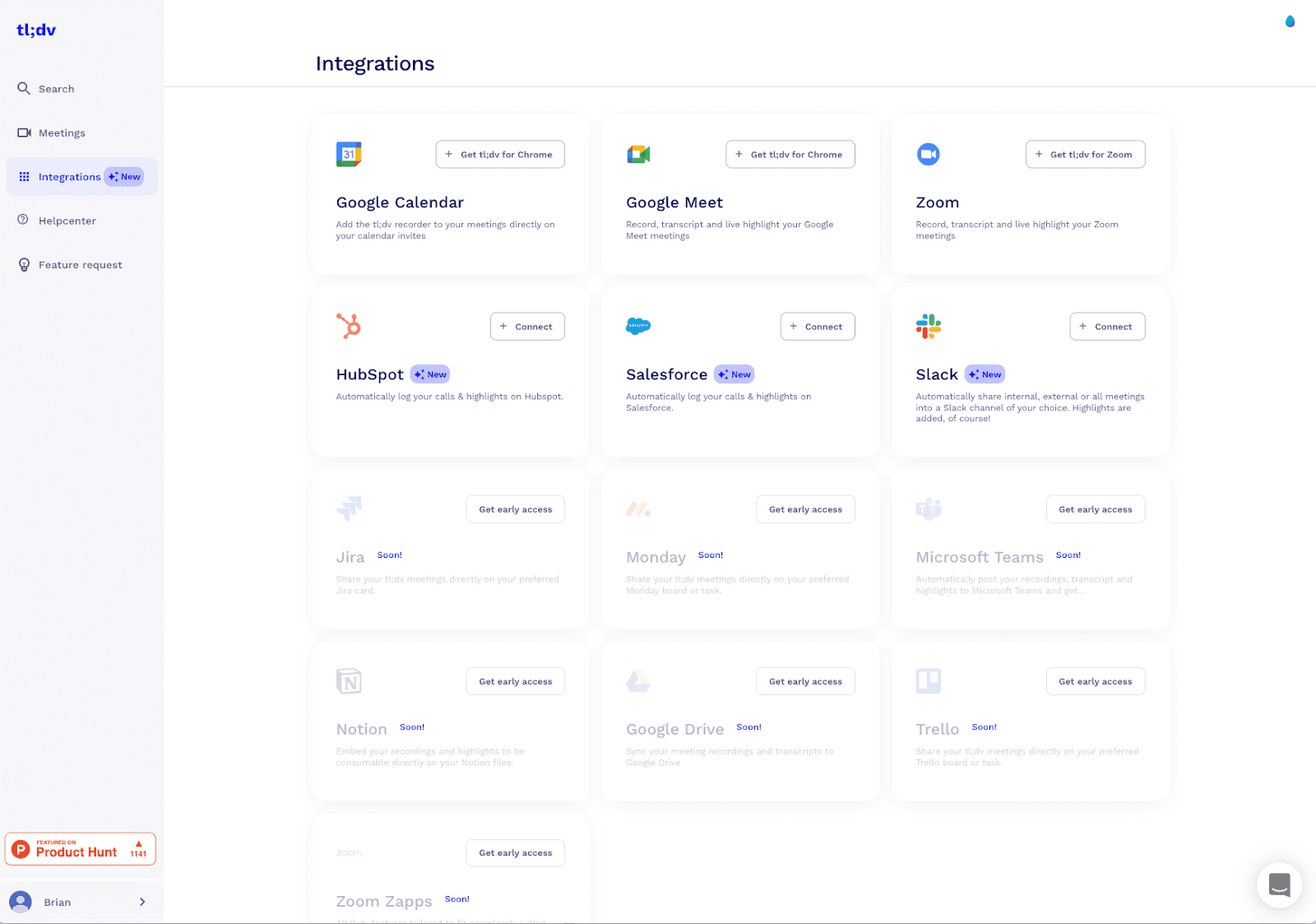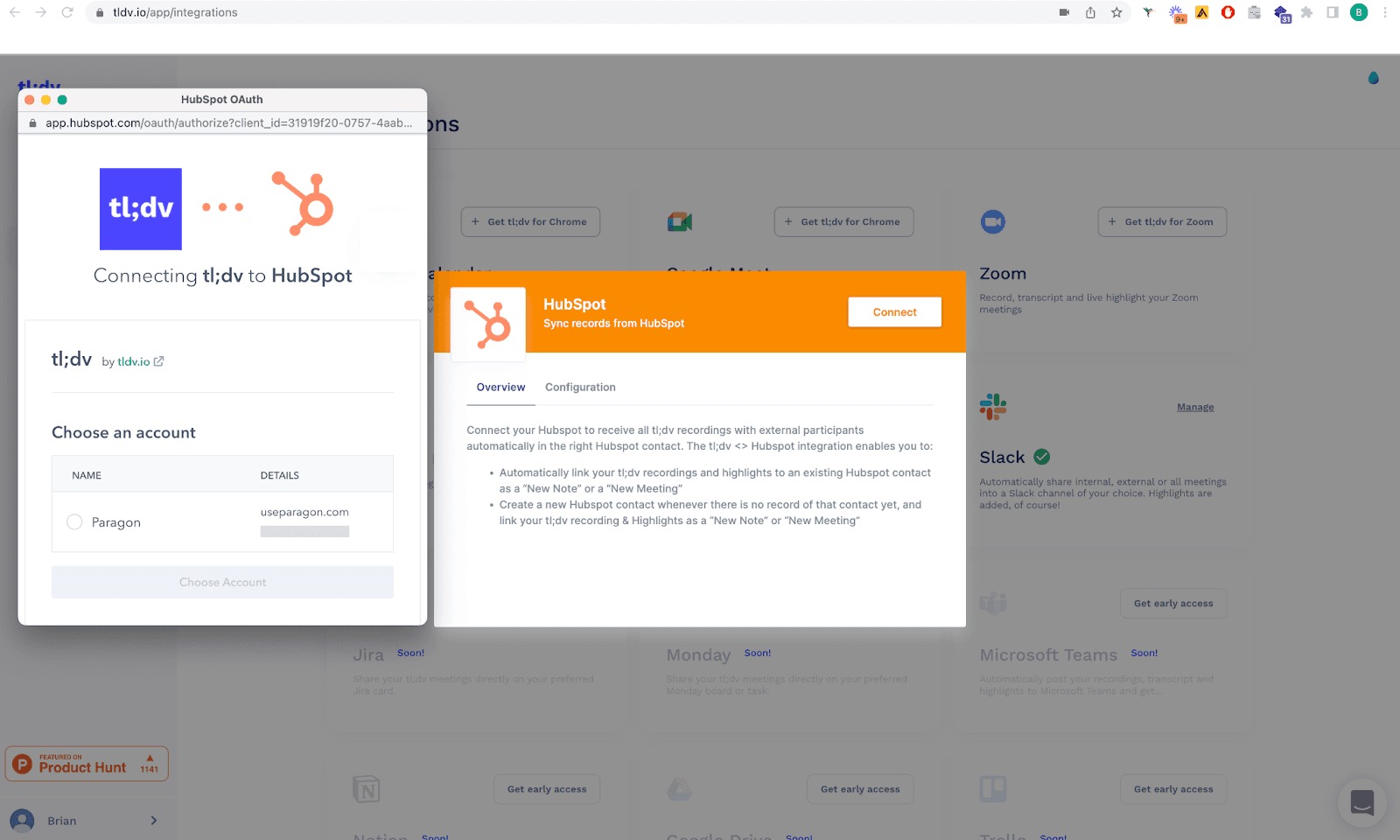Guides
Building a SaaS Integration Marketplace
Get the best practices for building an integration marketplace for your users to find, authenticate, and configure the integrations in your app.

Brian Yam
,
Head of Marketing
6
mins to read
How To Build an Integration Marketplace
The leading SaaS companies today all have integration marketplaces. Salesforce has their App Exchange, HubSpot has their App Marketplace, and Slack has their App Store. Ultimately, providing integrations for a plethora of 3rd party apps have been a key driver for the successes of these companies.
However, as the SaaS industry continues to grow, even early stage startups are recognizing that integrations need to be a core part of their product offering, as their customers have growing expectations for integration support.
That’s why it’s crucial to have an integration marketplace within your app that provides a streamlined way for your customers to discover, install, and configure native integrations.
In this article, we’ll cover:
Why every SaaS company needs a scalable integration marketplace
The key requirements & best practices to keep in mind when building an integration marketplace
The challenges with certain 3rd party embedded integration marketplaces
The most scalable solution
Let’s get into it.
Why do integration marketplaces exist?
According to Segment, the average mid-market company uses 185 different SaaS tools. Since transferring data between these tools manually would be prohibitively time-consuming and expensive, end-users of SaaS tools increasingly require the different apps in their tech stack to integrate with each other. In fact, over 70% of SaaS buyers consider integrations to be a top consideration when comparing different vendors.
So in order to stay competitive, as a SaaS company, you need to build out dozens of native integrations that their customers need, into their product. A centralized integration marketplace quickly becomes necessary in order for your customers to easily find or configure the integrations that your team has spent months building.
And if integrations are a key driver of your pricing and upsell strategy, you want to make sure that your customers discover the integrations that they could be benefitting from at higher tiers.
What is a SaaS integration marketplace?
It’s important to note the distinction between an in-app integration marketplace and an integrations page on your website.
Marketing pages that show off integrations are a useful resource for prospects who are in the early stages of the buyer’s journey. Think of any SaaS company’s website, and generally they will have an /integrations page, similar to ours.
While it is important to have a well thought out approach to building an integrations page on your website, this article will be focused on building an in-app integration marketplace, which is significantly more complex.
An integration marketplace is a centralized hub in your app where users can explore, authenticate, and configure the behavior of your app’s native integrations.
What makes for a good SaaS integration marketplace?
An integration marketplace is much more complicated to build than a marketing page on your website.
You need to ensure that it:
Provide an exhaustive list of all available integrations in our app
Display context on the functionality of each integration
Enable a seamless authentication experience for each integration
Support configurability within integrations
Listing all integrations
This is the most intuitive requirement. The key is to ensure the integration marketplace is updated whenever you build a new integration or update an existing one.

Context on each integration
A well designed integration marketplace also needs to provide your customers with context on the expected behavior for each integration.
For example,with Paragon’s Connect Portal, an out-of-the-box end-user UI, you can easily edit each integration’s description, as well as the description for each individual workflow.

Seamless authentication experience
In order to enable an integration, your customers need to provide their credentials for the 3rd party app.
In general, this will be done through an OAuth or API key flow, and your integration marketplace needs to seamlessly guide your customers through that authentication process.
Note: Don’t want to spend weeks building each integration’s authentication mechanism? See how Paragon’s fully managed authentication solution can help.
Configurability
Beyond authentication, oftentimes, integrations can provide multiple features, yet not all will be relevant for every customer.
For example, a single Salesforce integration can provide:
Lead syncing
Contact syncing
Account syncing
Automatic task creation
As a result, you may need to offer your customer the ability to enable or disable those features, based on their needs.
Field Mapping
For integration features that require your customers to define the object/field mapping between your app and the 3rd party app, you’ll need to build a seamless experience that enables them to input those mappings.
This is arguably the most difficult to implement when it comes to providing configurability for the integrations that you provide.
Here’s an example of the out of the box, dynamic field mapping functionality that Paragon’s customers can build into their integration.

Example of a SaaS integration marketplaces
To give you some inspiration, here is an exmaple of a well-designed integration marketplace built by our customer, tl;dv.

If a user wants to learn about, install, or configure an integration, they can simply click on the individual integration component.

Engineering costs of building an integration marketplace
While this may not seem like a challenge for the first few integrations, the costs for maintaining and updating your integration marketplace as you scale to dozens of integrations can quickly compound.
This is because updates will inevitably be required whenever you:
Ship a new integration
Ship a new feature within an existing integration
Update/remove a feature within an existing integration
Need to update the copy on the integration UI
Each of these events will require your engineering team to manually update your integration marketplace, which is why as you scale your integration roadmap, so too does the engineering effort required to maintain the marketplace.
The most scalable way to build an integration marketplace
As a feature of our embedded iPaaS, Paragon provides an extremely configurable and customizable integration marketplace implementation that enables you to dynamically list all integrations built both on and off your platform.
This will let you provide your customers with a completely native integration experience.
Unlike fully embedded integration marketplaces, we provide the building blocks you need to build custom integration components that can then dynamically display any integration built on Paragon as well as integrations you may have built in-house.
This is achieved in 2 steps:
Defining each integration’s end-user UI
Rendering the list of integrations
The key benefit with building on Paragon is that even your integration marketplace will be automatically be updated as you deploy new integrations, and your product managers/product marketers can manage any copy changes without engineering.
For details on how easily this can be achieved, read our documentation for building an in-app integration marketplace here.
Conclusion
In summary, if you’re looking to build an integration marketplace in your app, you need to ensure it’s constantly up to date, and provides your customers a seamless integration experience.
Building one in-house is not inherently difficult, but maintaining it as you scale your integration roadmap will become a recurring engineering cost that you will not want to incur.
That’s why Paragon provides a highly configurable integration marketplace that you can add to your application, on top of offloading over 70% of the engineering effort required to build the integrations themselves.
If you want to see how you can ship production-ready integrations in a matter of days, not months, book a demo or sign up for a free trial today.






